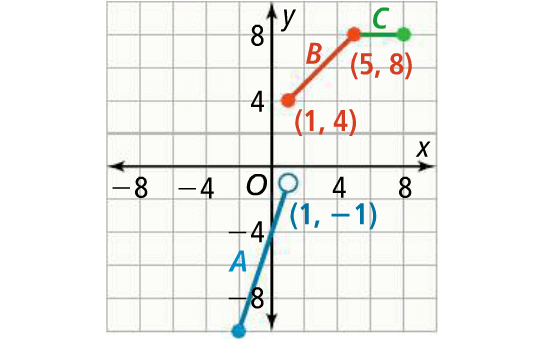
The-Basic-Components-of-Pathophysiology.Differentiation-Polynomial-and-Exponential.Differentiating-Trigonometric-Functions.Exercises for Piecewise Functions Graph the piecewise function. Then just replace the given input in the function definition corresponding to that particular interval.Ī piecewise continuous function, as its name implies, is a continuous function, which means, its graph has different pieces in it but still we will be able to draw the graph without lifting the pencil.First, see which of the given intervals (or inequalities) the given input belongs.To evaluate a piecewise function at any given input, See what \(y\)-values are covered by the graph. To find the range of a piecewise function, the easiest way is to plot it and look at the \(y\)-axis. Take the union of all intervals with \(x\) and that will give us the domain. To find the domain of a piecewise function, we can only look at the definition of the given function.


Step 6: Now, just draw all the points from the table (taking care of the open dots) in a graph sheet and connect them by curves.Step 5: Substitute each \(x\) value from each table into the function definition to obtain the corresponding \(y\) values.If the piece is not a straight line, take \(3\) or more for \(x\). If the piece is a straight line, \(2\) values are enough for \(x\). Step 4: In each table, get more numbers (random numbers) in the \(x\) column that lies in the corresponding interval to get the perfect shape of the graph.If the endpoint is removed from the interval, note that we get an open dot corresponding to that point in the graph. Insert the endpoints of the interval without fail. Step 3: Create a two-column table labeled \(x\) and \(y\) corresponding to each interval.Step 2: Write the intervals shown in the function definition along with their definitions.So that we will have an idea of what shape the piece of the function would result in. For example, \(f(x)= ax + b\) represents a linear function (which gives a line), \(f(x)= ax^2+ bx+c\) represents a quadratic function (which gives a parabola), and so on. Step 1: First, understand what each definition of a function represents.Here are the steps to graph a piecewise function. The diagram of a piecewise function has several pieces, where each piece corresponds to its definition in an interval. Then the diagram \(f(x)\) has two pieces, one corresponding to \(x\) (when \(x\) is in the interval \([0, ∞)\)) and the other corresponding to \(-x\) (when \(x\) is in the interval \((-∞, 0)\)).



 0 kommentar(er)
0 kommentar(er)
